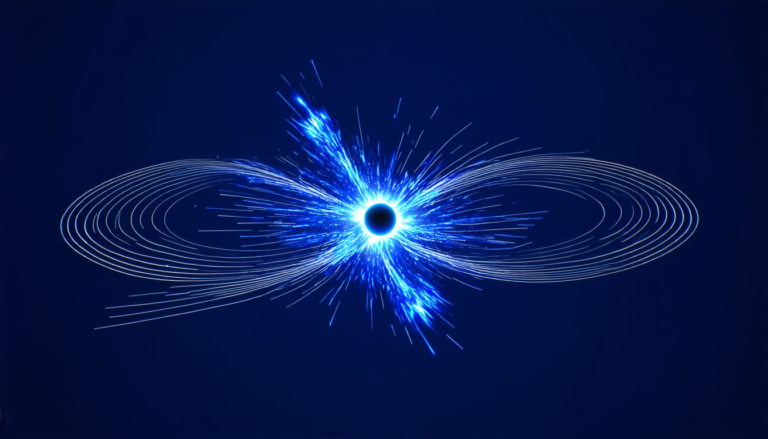Thursday 05 June 2025
Scientists have long been fascinated by the stars, and one of the biggest mysteries surrounding them is their magnetic fields. While we know that many stars have strong magnetic fields, we’ve had a hard time understanding exactly how they work.
Recently, researchers made a major breakthrough in this area by developing a new method for analyzing the magnetic fields of stars. This new approach uses a combination of data from powerful telescopes and advanced computer algorithms to create a more accurate picture of what these fields look like.
The study focused on a particular star called Tau Sco, which is known for its strong magnetic field. Using their new method, the researchers were able to create a detailed map of this field, showing how it varies across the surface of the star.
One of the most interesting things about this research is that it challenges our current understanding of how stars form and evolve. Traditionally, scientists have thought that stars like Tau Sco would have simple, dipolar magnetic fields. But the new data suggests that these fields may be much more complex than we previously thought.
The researchers used a technique called Zeeman-Doppler imaging to create their map of the star’s magnetic field. This involves analyzing the light emitted by the star and using it to infer the strength and direction of its magnetic field.
By combining this data with information from other telescopes, the scientists were able to build a detailed picture of Tau Sco’s magnetic field. They found that it is much more complex than previously thought, with multiple components working together to create the overall field.
This research has important implications for our understanding of stars and their behavior. For example, it could help us better understand how stars form and evolve over time. It may also provide clues about the presence of planets around these stars and the conditions that might support life.
In addition to its scientific importance, this research is also a testament to human ingenuity. By combining cutting-edge technology with advanced computer algorithms, scientists are able to make new discoveries that were previously impossible.
Overall, this study represents an exciting step forward in our understanding of stars and their magnetic fields. It has the potential to reveal new insights into the behavior of these celestial bodies and could even provide clues about the presence of life beyond Earth.
Cite this article: “Unraveling the Mysteries of Stellar Magnetic Fields”, The Science Archive, 2025.
Stars, Magnetic Fields, Tau Sco, Zeeman-Doppler Imaging, Telescopes, Computer Algorithms, Star Formation, Evolution, Planetary Systems, Astrobiology







